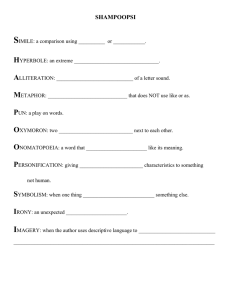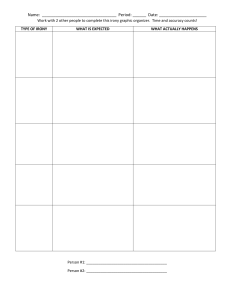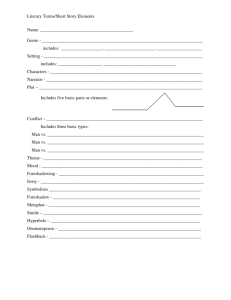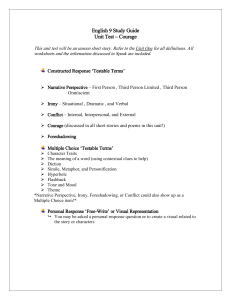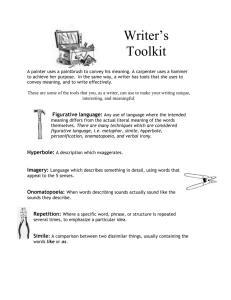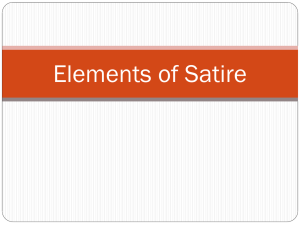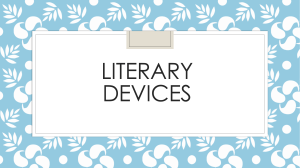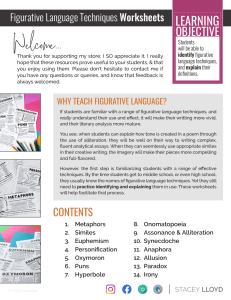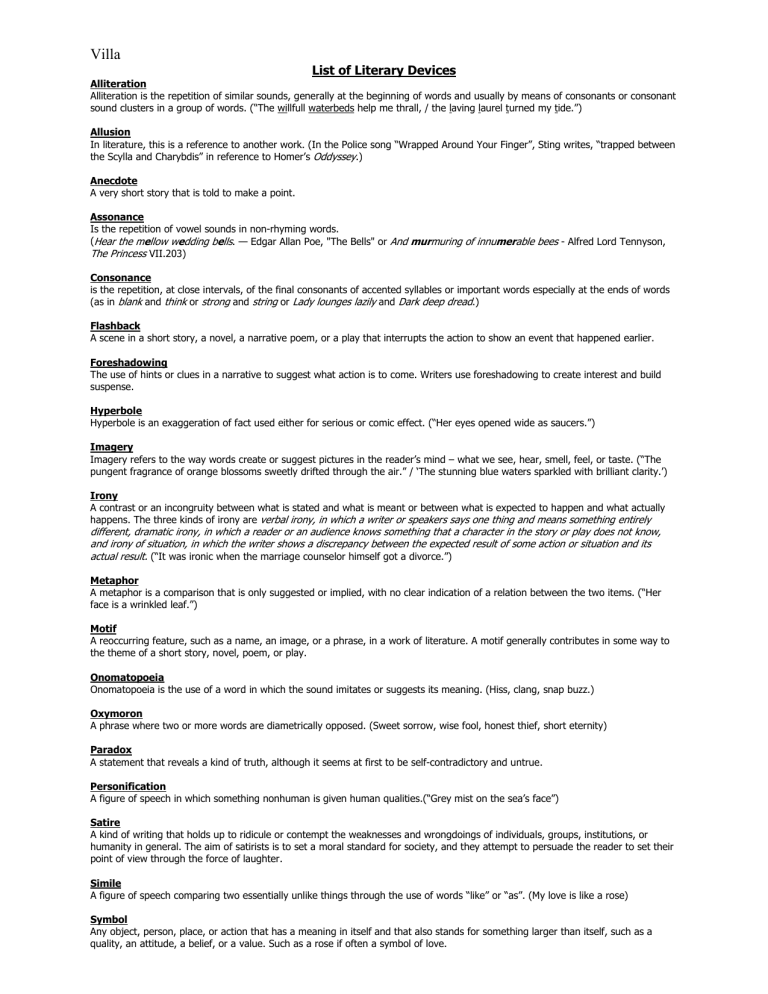
Villa List of Literary Devices Alliteration Alliteration is the repetition of similar sounds, generally at the beginning of words and usually by means of consonants or consonant sound clusters in a group of words. (“The willfull waterbeds help me thrall, / the laving laurel turned my tide.”) Allusion In literature, this is a reference to another work. (In the Police song “Wrapped Around Your Finger”, Sting writes, “trapped between the Scylla and Charybdis” in reference to Homer’s Oddyssey.) Anecdote A very short story that is told to make a point. Assonance Is the repetition of vowel sounds in non-rhyming words. (Hear the mellow wedding bells. — Edgar Allan Poe, "The Bells" or And murmuring of innumerable bees - Alfred Lord Tennyson, The Princess VII.203) Consonance is the repetition, at close intervals, of the final consonants of accented syllables or important words especially at the ends of words (as in blank and think or strong and string or Lady lounges lazily and Dark deep dread.) Flashback A scene in a short story, a novel, a narrative poem, or a play that interrupts the action to show an event that happened earlier. Foreshadowing The use of hints or clues in a narrative to suggest what action is to come. Writers use foreshadowing to create interest and build suspense. Hyperbole Hyperbole is an exaggeration of fact used either for serious or comic effect. (“Her eyes opened wide as saucers.”) Imagery Imagery refers to the way words create or suggest pictures in the reader’s mind – what we see, hear, smell, feel, or taste. (“The pungent fragrance of orange blossoms sweetly drifted through the air.” / ‘The stunning blue waters sparkled with brilliant clarity.’) Irony A contrast or an incongruity between what is stated and what is meant or between what is expected to happen and what actually happens. The three kinds of irony are verbal irony, in which a writer or speakers says one thing and means something entirely different, dramatic irony, in which a reader or an audience knows something that a character in the story or play does not know, and irony of situation, in which the writer shows a discrepancy between the expected result of some action or situation and its actual result. (“It was ironic when the marriage counselor himself got a divorce.”) Metaphor A metaphor is a comparison that is only suggested or implied, with no clear indication of a relation between the two items. (“Her face is a wrinkled leaf.”) Motif A reoccurring feature, such as a name, an image, or a phrase, in a work of literature. A motif generally contributes in some way to the theme of a short story, novel, poem, or play. Onomatopoeia Onomatopoeia is the use of a word in which the sound imitates or suggests its meaning. (Hiss, clang, snap buzz.) Oxymoron A phrase where two or more words are diametrically opposed. (Sweet sorrow, wise fool, honest thief, short eternity) Paradox A statement that reveals a kind of truth, although it seems at first to be self-contradictory and untrue. Personification A figure of speech in which something nonhuman is given human qualities.(“Grey mist on the sea’s face”) Satire A kind of writing that holds up to ridicule or contempt the weaknesses and wrongdoings of individuals, groups, institutions, or humanity in general. The aim of satirists is to set a moral standard for society, and they attempt to persuade the reader to set their point of view through the force of laughter. Simile A figure of speech comparing two essentially unlike things through the use of words “like” or “as”. (My love is like a rose) Symbol Any object, person, place, or action that has a meaning in itself and that also stands for something larger than itself, such as a quality, an attitude, a belief, or a value. Such as a rose if often a symbol of love.
